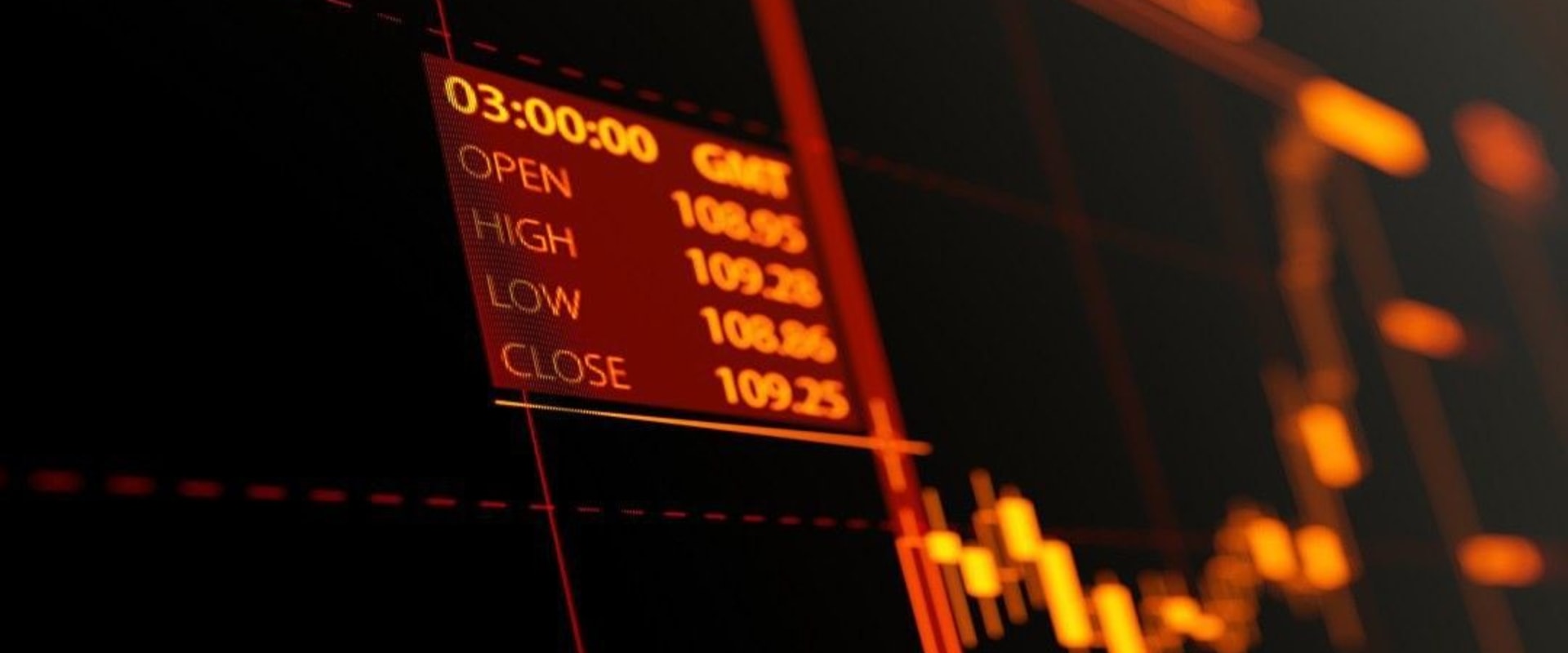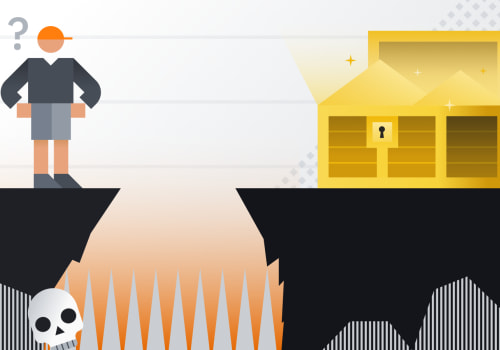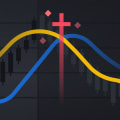Forex trading has become increasingly popular among the general public, offering opportunities to make profits by trading different currencies. To enhance trading efficiency and profitability, many traders turn to forex robots, automated software programs designed to execute trades on their behalf. In this article, we will explore the topic of finding the most profitable forex robot and understand how these robots work.
Understanding Forex Robots
Definition of Forex Robots
Forex robots, also known as expert advisors (EAs), are software programs that use algorithms to identify trading opportunities in the forex market. These robots are designed to execute trades automatically, based on predefined parameters and rules set by the trader. They aim to remove the emotional and human error factors from trading decisions. Automated trading involves the use of computer programs to execute trades on behalf of traders. Forex robots are specific types of trading software designed to analyze market conditions, generate trading signals, and execute trades automatically.
How Forex Robots Work
Forex robots analyze market data, such as price charts, technical indicators, and economic news, to identify potential trading signals. They can generate buy or sell orders, manage risk through stop-loss and take-profit levels, and even apply advanced strategies like hedging and scalping. Forex robots can be integrated with popular trading platforms, allowing traders to automate their trading strategies.
Benefits of Forex Robots
Forex robots offer several advantages to traders:
Increased Speed and Efficiency: Forex robots can quickly analyze market data and execute trades in milliseconds, enabling traders to take advantage of profitable opportunities promptly.
Elimination of Emotional Factors: By automating trading decisions, forex robots eliminate emotional biases that often influence human traders, leading to more disciplined and consistent trading strategies.
24/7 Market Monitoring: Forex robots can monitor the markets continuously, even when traders are not available, ensuring that no trading opportunities are missed.
Backtesting Capabilities: Traders can test their strategies using historical data to assess performance and make necessary adjustments before deploying forex robots in live trading.
How Forex Robots Work
3.1 Algorithmic Trading
Forex robots operate based on predefined algorithms and rules. These algorithms analyze market data, such as price movements, indicators, and other relevant factors, to identify potential trading opportunities.
3.2 Backtesting
Before deploying a forex robot in live trading, it's essential to conduct backtesting. Backtesting involves running the robot's algorithm on historical market data to evaluate its performance and validate its profitability.
3.3 Execution of Trades
Once a forex robot identifies a favorable trading opportunity, it automatically executes the trade according to the predefined parameters and settings. This ensures trades are executed quickly and accurately without human intervention.
Evaluating Profitability
To determine the most profitable forex robot, several factors need to be considered:
Performance History: Assess the robot's track record by analyzing its past performance. Look for consistent profits and low drawdowns (losses).
Backtesting: Evaluate the robot's performance using historical data to simulate trading conditions. Backtesting helps assess the effectiveness of the robot's strategies in different market scenarios.
Live Trading Results: Consider real-time performance results to verify the robot's profitability in current market conditions. Live trading results provide valuable insights into the robot's actual performance.
Customization and Flexibility: Look for robots that allow customization of trading parameters to adapt to changing market conditions. Flexibility is crucial to optimize the robot's performance.
Choosing the Right Forex Robot
Considerations for Selection
When selecting a forex robot, traders should consider factors such as:
Track Record: Assess the robot's historical performance and verify its profitability.
Strategy and Approach: Understand the robot's trading strategy and whether it aligns with your trading goals and risk tolerance.
Customization Options: Look for robots that allow customization to adapt to changing market conditions.
Technical Support: Ensure the robot comes with reliable technical support to address any issues or concerns.
Evaluating Performance
Traders should evaluate a forex robot's performance based on metrics such as profitability, drawdowns, win rate, and risk-to-reward ratio. These metrics help assess the robot's consistency and potential for long-term success.
User Reviews and Feedback
Reading user reviews and feedback can provide valuable insights into the real-world performance and user experience of forex robots. Traders should consider both positive and negative reviews to make an informed decision.
Setting Up and Using a Forex Robot
Installation and Configuration
Setting up a forex robot typically involves downloading the software, installing it on a trading platform, and configuring the necessary parameters, such as lot size, risk management settings, and trading hours.
Customizing Settings
Forex robots often provide customization options to adapt to individual trading preferences. Traders can adjust parameters related to entry and exit criteria, stop-loss and take-profit levels, and other trading rules.
Monitoring and Managing Trades
Once a forex robot is up and running, it's crucial to monitor its performance regularly. Traders should keep an eye on executed trades, account balance, and overall profitability to ensure the robot is functioning as intended.
Common Mistakes to Avoid
Lack of Proper Research
One common mistake traders make is failing to conduct thorough research before selecting a forex robot. Insufficient due diligence can lead to choosing an underperforming or unreliable robot.
Over-Optimization
Over-optimization refers to excessively adjusting the robot's parameters based on historical data, which may lead to poor performance in live trading. Traders should strike a balance between optimization and adaptability.
Ignoring Market Conditions
Forex robots rely on predefined rules and algorithms, but market conditions can change rapidly. Ignoring current market conditions and failing to update robot settings accordingly can result in missed opportunities or excessive risk exposure.
Advantages and Limitations of Forex Robots
7.1 Advantages
Increased Trading Efficiency: Forex robots enable rapid execution of trades, eliminating manual delays and improving overall trading efficiency.
Emotion-Free Trading: By removing human emotions from the trading process, forex robots can adhere strictly to predefined strategies and minimize impulsive decision-making.
Enhanced Market Monitoring: Forex robots can continuously monitor multiple currency pairs and market conditions simultaneously, allowing traders to identify more trading opportunities.
7.2 Limitations
Dependency on Technology: Forex robots rely on stable internet connections, reliable hardware, and trading platforms. Technical issues or outages can disrupt their functioning.
Lack of Adaptability: Forex robots operate based on predefined algorithms and may struggle to adjust to sudden market shifts or unusual events that fall outside their programmed rules.
Risk of System Errors: Bugs or glitches in forex robot software can result in unintended trades or erroneous execution, leading to potential financial losses.
Pros and Cons
Advantages of Forex Robots
Automation: Forex robots automate the trading process, allowing traders to execute trades 24/7 without constant monitoring.
Emotional Discipline: Robots eliminate emotional biases and impulsive decision-making, ensuring trades are based on predefined strategies.
Speed and Efficiency: Robots can analyze vast amounts of market data instantly and execute trades within milliseconds, taking advantage of even minor price fluctuations.
Backtesting and Optimization: Forex robots can be backtested using historical data to fine-tune their strategies and improve performance.
Disadvantages of Forex Robots
Dependence on Technology: The effectiveness of forex robots relies on stable internet connections and reliable software performance. Technical issues can disrupt trading operations.
Lack of Adaptability: Robots follow predefined rules and parameters, which may not adapt to sudden market changes or unforeseen events.
Risk of System Errors: Errors in coding or technical glitches can lead to unexpected trading results, including substantial losses.
Market Volatility: Forex robots may struggle during periods of high market volatility when sudden price movements deviate from established patterns.
Conclusion
In conclusion, choosing the right forex robot is essential for maximizing profitability in forex trading. Consider factors such as past performance, backtesting results, and customization options when evaluating different robots. Remember that no forex robot can guarantee profits, and trading always carries inherent risks. By conducting thorough research and selecting a reliable and well-performing robot, traders can enhance their chances of success in the forex market.
Q: What is a Forex Robot?
A: A forex robot is an automated software program designed to execute trades in the forex market based on predefined rules and parameters.
Q: Can Forex Robots Guarantee Profits?
A: No, forex robots cannot guarantee profits. They are tools that assist traders in executing trades based on predetermined strategies, but market conditions and risks can impact trading outcomes.
Q: Are Forex Robots Legal?
A: Yes, forex robots are legal. However, regulations and restrictions may vary in different countries. Traders should ensure compliance with local laws and regulations.
Q: How Do I Choose the Best Forex Robot?
A: To choose the best forex robot, consider factors such as past performance, backtesting results, customization options, and compatibility with your trading platform.
Q: How Much Money Can I Make with a Forex Robot?
A: The profitability of a forex robot varies depending on market conditions and the effectiveness of the chosen robot's strategies. While some traders achieve significant profits, it's important to remember that trading always involves risks, and results can vary.
Q Can Forex Robots Guarantee Profits?
No, forex robots cannot guarantee profits. While they can assist in automated trading, the forex market is highly volatile and subject to various factors beyond a robot's control.
Q. Are Forex Robots Legal?
Yes, using forex robots for trading is legal. However, traders should ensure compliance with applicable regulations and guidelines in their respective jurisdictions.
Q. Do I Need Technical Knowledge?
While technical knowledge can be helpful, many forex robots are designed to be user-friendly and accessible to traders with varying levels of technical expertise.
Q. Can Forex Robots Replace Human Traders?
Forex robots can automate trading tasks, but they cannot replace the critical thinking, intuition, and decision-making capabilities of human traders. They are tools that assist human traders in executing their strategies.
Q. How Much Does a Forex Robot Cost?
The cost of forex robots varies significantly, ranging from free versions with limited features to premium robots with advanced functionalities. Traders should consider the value and potential returns when evaluating pricing.
Q. What Are the Risks of Using Forex Robots?
The risks of using forex robots include system errors, technical failures, incorrect strategy implementation, and market volatility. Traders should carefully assess and manage these risks.
Q. Can Forex Robots Work with Any Broker?
Forex robots are typically compatible with most popular trading platforms and brokers. However, it's essential to ensure compatibility before using a specific robot with a preferred broker.
Q. How Do I Choose the Best Forex Robot?
Choosing the best forex robot involves considering factors such as performance history, strategy alignment, customization options, and user reviews. Conducting thorough research is crucial.
Q. Are Free Forex Robots Reliable?
The reliability of free forex robots can vary. Some free robots may offer limited features or performance, while others may be well-designed and effective. Careful evaluation is necessary.
Q. How Can I Optimize Forex Robot Performance?
To optimize forex robot performance, traders can consider adjusting parameters based on backtesting results, monitoring market conditions, and staying updated with the latest industry trends and strategies.
Q. Is It Possible to Build My Own Forex Robot?
Yes, it is possible to build your own forex robot. However, it requires programming skills, market knowledge, and understanding of algorithmic trading principles.
Q. Can Forex Robots Be Used on Mobile Devices?
Yes, many forex robots are compatible with mobile devices, allowing traders to monitor and manage trades on the go. Traders should ensure compatibility with their chosen trading platform and mobile operating system.
Q. Are Forex Robots Suitable for Beginners?
Forex robots can be suitable for beginners as they automate trading tasks and remove emotional biases. However, beginners should still acquire a basic understanding of forex trading principles.
Q. How Often Should I Update My Forex Robot?
The frequency of updating a forex robot depends on market conditions, changes in trading strategies, and the robot's performance. Regular monitoring is advisable, and updates should be done as necessary.
Q. Can Forex Robots Be Used in Multiple Currency Pairs?
Yes, many forex robots are designed to work with multiple currency pairs. Traders should ensure that their chosen robot supports the currency pairs they intend to trade.
In conclusion, finding the most profitable forex robot requires thorough evaluation of various factors, including performance history, backtesting results, and customization options. Traders should carefully research and select a forex robot that aligns with their trading goals and risk tolerance. It's essential to remember that while forex robots can enhance trading efficiency, no strategy can guarantee profits in the highly volatile forex market. By choosing wisely and staying informed, traders can increase their chances of success and profitability in forex trading.
Forex robots offer traders the opportunity to streamline their trading activities and enhance efficiency. By automating trading decisions, traders can save time, minimize emotional biases, and potentially capitalize on more trading opportunities. However, it's important to choose the right forex robot, conduct proper research, and stay updated with market conditions. Remember that forex robots are tools that complement human expertise rather than replace it.












Leave Reply